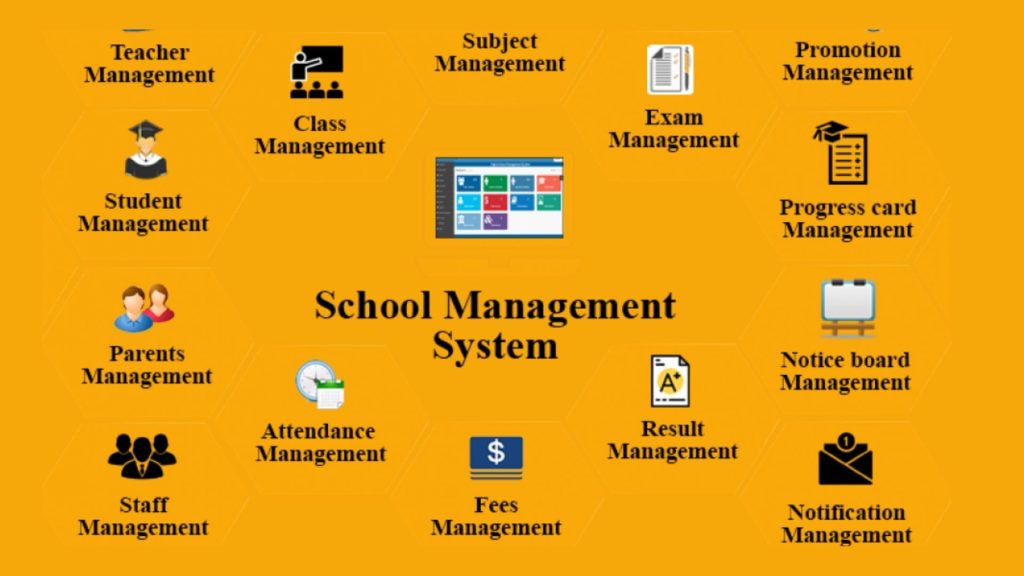In today’s fast-paced educational environment, effective management is crucial for the success of any school. From tracking student performance to managing staff schedules and finances, school administrators face a myriad of tasks that require organization and efficiency. School administration software has emerged as a powerful tool to streamline these processes, allowing educators to focus more on teaching and less on paperwork.
Having worked in various educational settings, I’ve witnessed firsthand the challenges schools face without proper administrative tools. The transition from manual processes to digital solutions can be daunting but transformative. In this article, we will explore the best school administration software available, their key features, and how they can enhance the management of educational institutions.
Benefits of School Administration Software

Implementing school administration software offers numerous benefits, including:
- Increased Efficiency: Automating administrative tasks reduces the time spent on manual processes, allowing staff to focus on more critical responsibilities.
- Improved Communication: Many software solutions include communication tools that facilitate interaction between teachers, students, and parents, fostering a collaborative environment.
- Data Management: School administration software centralizes data storage, making it easier to access and analyze student performance, attendance, and other critical information.
- Enhanced Reporting: With built-in reporting features, administrators can generate real-time reports on various aspects of school management, aiding in decision-making.
- Cost-Effective Solutions: By streamlining operations, schools can often reduce operational costs associated with administrative tasks, ultimately reallocating resources to enhance educational programs.
Key Features to Look for in School Administration Software
When selecting school administration software, consider the following essential features:
- Student Information System (SIS): A robust SIS allows schools to manage student data, including enrollment, attendance, grades, and transcripts.
- Financial Management Tools: Look for software that includes budgeting, accounting, and billing functionalities to streamline financial operations.
- Communication Tools: Integrated messaging systems, email notifications, and parent portals enhance communication between teachers, students, and parents.
- Reporting and Analytics: Powerful reporting tools enable administrators to track performance metrics and generate insights to inform decision-making.
- User-Friendly Interface: A straightforward, intuitive interface is essential for ensuring that staff can easily navigate the software without extensive training.
- Mobile Accessibility: With the increasing reliance on mobile devices, choose software that offers mobile access to allow users to manage tasks on the go.
Top School Administration Software Solutions
Here are some of the best school administration software options available today:
1. PowerSchool
Overview: PowerSchool is one of the leading school administration software solutions, offering a comprehensive suite of tools for K-12 institutions.
Key Features:
- Student information system (SIS) for managing student data
- Attendance tracking and reporting
- Gradebook and assessment tools
- Parent and student portals for communication
- Financial management features
Benefits: PowerSchool’s user-friendly interface and extensive customization options make it a favorite among educators. Its robust reporting capabilities allow schools to make data-driven decisions.
2. Schoology
Overview: Schoology is an integrated learning management system (LMS) and school administration platform that enhances communication and collaboration.
Key Features:
- Course management and content delivery
- Communication tools for teachers, students, and parents
- Assessment and grading features
- Reporting and analytics dashboard
- Mobile app for on-the-go access
Benefits: Schoology’s emphasis on collaboration and engagement makes it ideal for schools looking to enhance their learning environment. Its LMS capabilities allow for seamless integration of teaching and administrative functions.
3. RenWeb (FACTS)
Overview: RenWeb, now part of FACTS, is a comprehensive school management system designed for private and faith-based schools.
Key Features:
- Student information management
- Attendance tracking and reporting
- Financial management tools, including billing and tuition collection
- Parent and student portals for easy access to information
- Communication tools for staff and families
Benefits: RenWeb’s focus on private school needs and its comprehensive financial management features make it an attractive choice for many institutions.
4. Infinite Campus
Overview: Infinite Campus is a versatile school administration software solution that caters to K-12 schools across the United States.
Key Features:
- Student information system with real-time data updates
- Attendance and grade reporting
- Communication tools for parents and students
- Financial management and billing features
- Customizable dashboards for administrators
Benefits: Infinite Campus’s real-time data capabilities and customizable features make it a powerful tool for schools looking to enhance their administrative processes.
5. Blackbaud
Overview: Blackbaud offers a comprehensive suite of software solutions tailored for K-12 schools, particularly independent and private institutions.
Key Features:
- Student information management
- Financial management tools, including fundraising and tuition management
- Learning management system for course delivery
- Communication features for families and staff
- Reporting and analytics tools
Benefits: Blackbaud’s all-in-one approach and strong focus on fundraising and financial management make it an excellent choice for schools seeking to enhance both educational and operational outcomes.
How to Choose the Right School Administration Software
Selecting the right school administration software requires careful consideration of your institution’s specific needs. Here are some steps to guide your decision-making process:
- Assess Your Needs: Identify the specific challenges your school faces and the features that will address those challenges. Involve key stakeholders, including administrators, teachers, and IT staff, in this assessment.
- Research Options: Explore various software solutions, read reviews, and compare features. Look for case studies or testimonials from schools similar to yours.
- Request Demos: Most software providers offer demos or trial periods. Take advantage of these opportunities to see how the software functions in real-time and assess its user-friendliness.
- Consider Budget: Determine your budget for school administration software and consider not only the initial costs but also ongoing maintenance and support fees.
- Evaluate Support and Training: Ensure the software provider offers adequate support and training resources to help your staff transition smoothly to the new system.
Conclusion: The Future of School Administration Software
As educational institutions continue to evolve, the role of school administration software will become increasingly important. By embracing technology, schools can streamline administrative processes, enhance communication, and ultimately improve student outcomes.
Investing in the right school administration software can transform the way your institution operates, allowing educators to focus on what truly matters: providing a high-quality education to students. As you explore your options, consider the features, benefits, and support offered by various software solutions to find the perfect fit for your school’s unique needs.
In conclusion, effective management is essential for the success of educational institutions, and school administration software is a crucial tool in achieving that goal. By leveraging the power of technology knowledge, schools can foster a more efficient, collaborative, and engaging learning environment for all.



